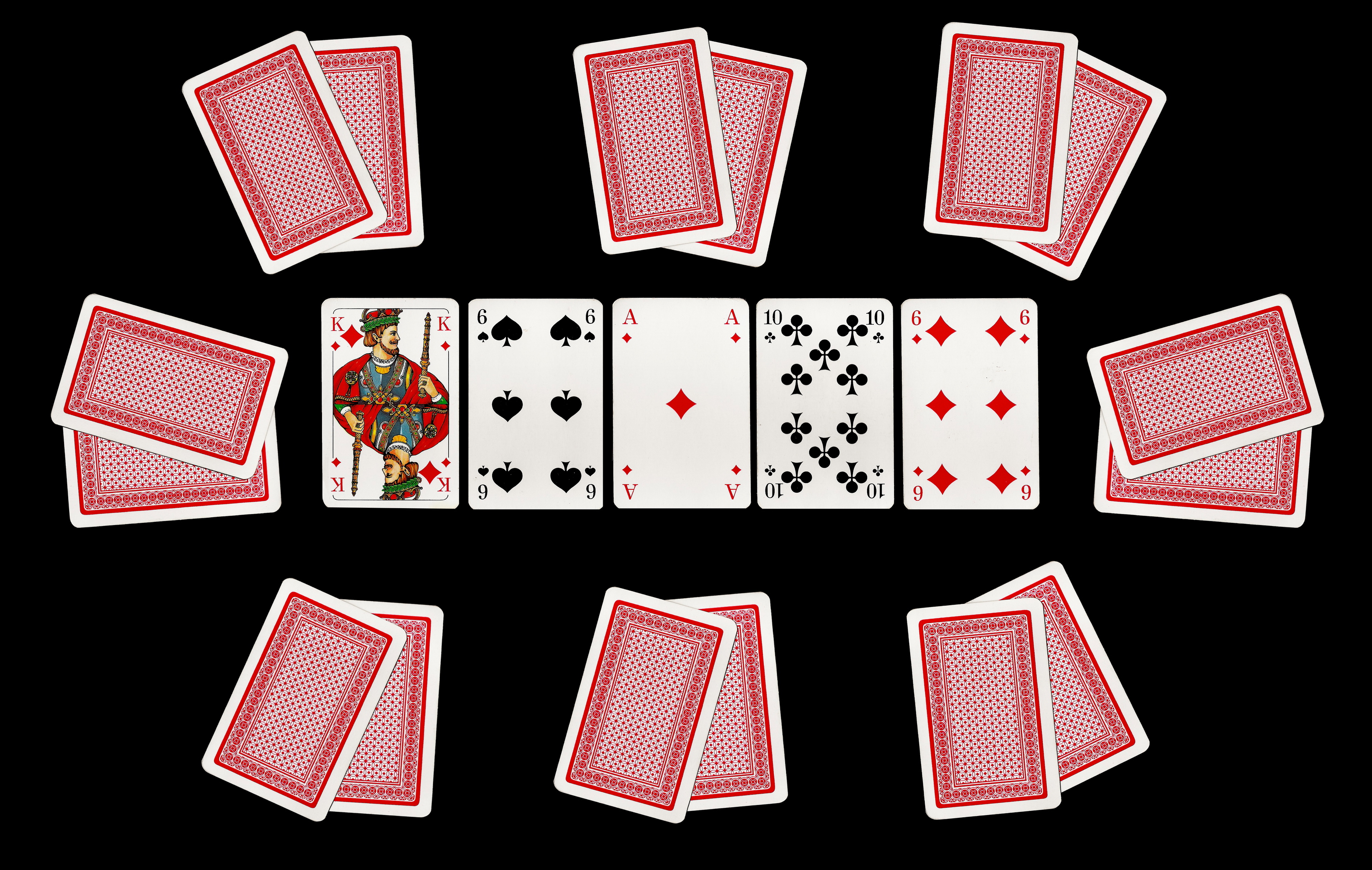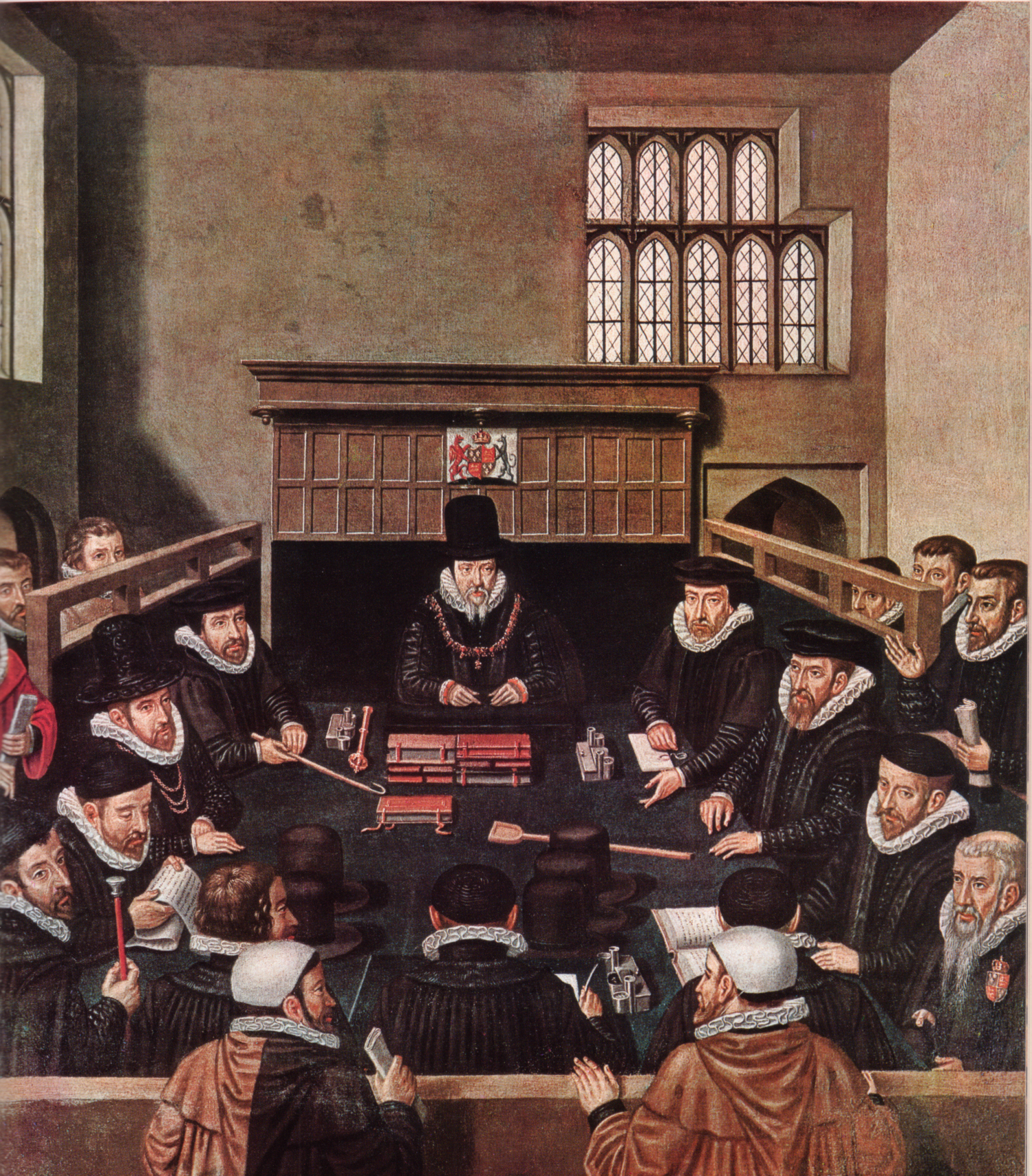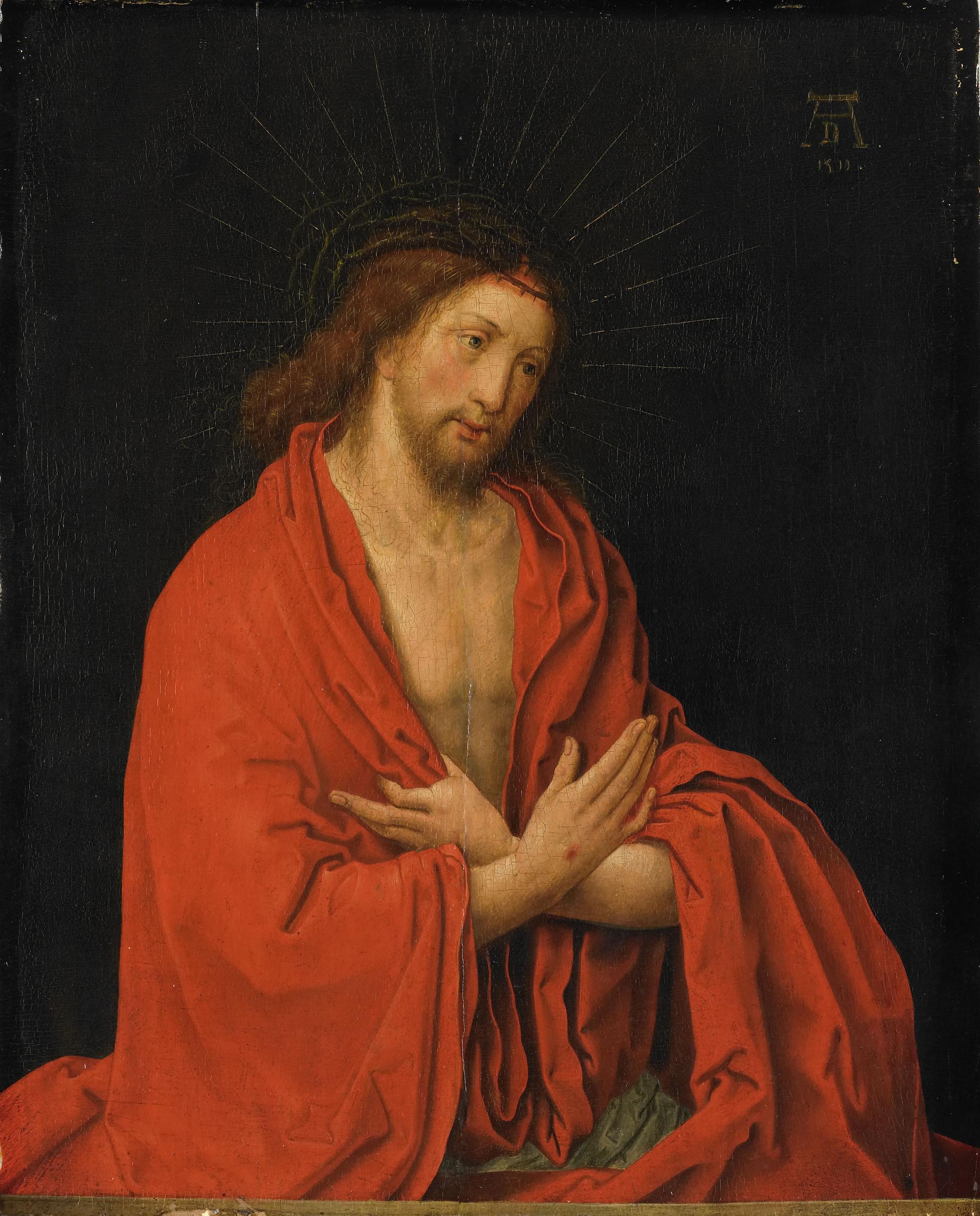|
Primero
Primero (in English also called Primus, in French ', in Italian ' or in Spanish ''Primera''), is a 16th-century gambling card game of which the earliest reference dates back to 1526. Primero is closely related to the game of primo visto (a.k.a. prima-vista, and various other spellings), if not the same. It is also believed to be one of the ancestors to the modern game of poker, to which it is strikingly similar. The gambling game with this name goes back to the 16th century, being known to Gerolamo Cardano as ', which he thought of as the noblest of all card games, to François Rabelais as ', and to William Shakespeare as primero. The origins of Primero It is uncertain if Primero is of Spanish or Italian origin. Although Daines Barrington is of the opinion that it is of Spanish origin, a poem of Francesco Berni is the earliest known writing to mention the game; it affords proof that it was at least commonly played in Italy at the beginning of the 16th century. His work ent ... [...More Info...] [...Related Items...] OR: [Wikipedia] [Google] [Baidu] |
Primo Visto
Primo visto, ''Primavista'', ''Prima-vista'', ''Primi-vist'', ''Primiuiste'', ''Primofistula'', or even ''Primefisto'', is a 16th-century gambling card game fashionable c. 1530–1640. Very little is known about this game, but judging by the etymology of the words used to describe the many local variants of the game, it appears to be one of Italian origin. Historical claims Based upon references in period literature it appears to be closely related to the game of Primero, with some later authorities claiming that the two games were in fact the very same. Opposing claims to this theory include the fact that the earliest known reference to the name Primo visto appears in Greene's "Notable Discovery of Coosnage" published in 1591, more than half a century after the name Primero was in common use. John Minsheu, an English linguist and lexicographer, claims that Primero and Prima vista (hence Primo visto) were two distinct card games - "That is, first and first seen, because he tha ... [...More Info...] [...Related Items...] OR: [Wikipedia] [Google] [Baidu] |
Italian Playing Cards
Playing cards (in Italian: ''carte da gioco'') have been in Italy since the late 14th century. Until the mid 19th century, Italy was composed of many smaller independent states which led to the development of various regional patterns of playing cards; "Italian suited cards" normally only refer to cards originating from northeastern Italy around the former Republic of Venice, which are largely confined to northern Italy, parts of Switzerland, Dalmatia and Bay of Kotor, southern Montenegro. Other parts of Italy traditionally use traditional local variants of Spanish playing cards, Spanish suits, French playing cards, French suits or German playing cards, German suits. As Latin-suited cards, Italian and Spanish suited cards use swords (''spade''), cups (''coppe''), coins (''denari''), and clubs (''bastoni''). All Italian suited decks have three face cards per suit: the ''fante'' (Jack (playing card), Knave), ''cavallo'' (Knight (playing card), Knight), and ''re'' (King (playing ca ... [...More Info...] [...Related Items...] OR: [Wikipedia] [Google] [Baidu] |
Card Game
A card game is any game that uses playing cards as the primary device with which the game is played, whether the cards are of a traditional design or specifically created for the game (proprietary). Countless card games exist, including families of related games (such as poker). A small number of card games played with traditional decks have formally standardized rules with international tournaments being held, but most are folk games whose rules may vary by region, culture, location or from circle (cards), circle to circle. Traditional card games are played with a ''deck'' or ''pack'' of playing cards which are identical in size and shape. Each card has two sides, the ''face'' and the ''back''. Normally the backs of the cards are indistinguishable. The faces of the cards may all be unique, or there can be duplicates. The composition of a deck is known to each player. In some cases several decks are Shuffling, shuffled together to form a single ''pack'' or ''shoe''. Modern car ... [...More Info...] [...Related Items...] OR: [Wikipedia] [Google] [Baidu] |
Poker
Poker is a family of Card game#Comparing games, comparing card games in which Card player, players betting (poker), wager over which poker hand, hand is best according to that specific game's rules. It is played worldwide, with varying rules in different places. While the earliest known form of the game was played with just 20 cards, today it is usually played with a standard 52-card deck, although in countries where short packs are common, it may be played with 32, 40 or 48 cards.Parlett (2008), pp. 568–570. Thus poker games vary in deck configuration, the number of cards in play, the number Poker dealer, dealt face up or face down and the number Community card poker, shared by all players, but all have rules that involve one or more rounds of Betting in poker, betting. In most modern poker games, the first round of betting begins with one or more of the players making some form of a forced bet (the ''blind (poker), blind'' or ''ante''). In standard poker, each player bets a ... [...More Info...] [...Related Items...] OR: [Wikipedia] [Google] [Baidu] |
Heraldic Supporter
In heraldry, supporters, sometimes referred to as ''attendants'', are figures or objects usually placed on either side of the shield and depicted holding it up. Historically, supporters were left to an individual's free choice and were assumed and changed at will, not always having any meaning whatsoever. In more modern times, restrictions have been put in place in certain countries and nowhere more prevalent than in the United Kingdom. Early forms of supporters are found in medieval seals. However, unlike the coronet or helmet and crest, supporters were not part of early medieval heraldry. As part of the heraldic achievement, they first become fashionable towards the end of the 15th century, but even in the 17th century were not necessarily part of the full heraldic achievement (being absent, for example, in ''Siebmachers Wappenbuch'' of 1605). The figures used as supporters may be based on real or imaginary animals, human figures, and in rare cases plants or other inani ... [...More Info...] [...Related Items...] OR: [Wikipedia] [Google] [Baidu] |
Federico Zuccari
Federico Zuccaro, also known as Federico Zuccari and Federigo Zucchero ( July/August 1609), was an Italian painter, draughtsman, architect and writer. He worked in various cities in Italy, as well as in other countries such as Spain, France, the Spanish Netherlands and England.. He was an important representative of late Mannerism in Italian art.. Life and work Zuccaro was born in Sant'Angelo in Vado, near Urbino (Marche), then in the Duchy of Urbino. His parents were the painter Ottaviano de Zucharellis, who changed his surname to Zuccaro in 1569, and Antonia Neri. He was the third child of eight. His siblings were called Taddeo, Bartolomea, Federico, Iacopo, Lucio, Maurizio, Aloysio and Marco Antonio. In 1550, when he was barely 11 years old, his parents brought him to Rome to study law but Federico preferred a career in art. He trained and worked in the workshop of his elder brother Taddeo who had become a successful painter in Rome. He became quickly integrated into the ... [...More Info...] [...Related Items...] OR: [Wikipedia] [Google] [Baidu] |
Lord Falkland
Viscount Falkland is a title in the Peerage of Scotland. The name refers to the royal burgh of Falkland in Fife. History The title was created in 1620 by King James VI for Sir Henry Cary, a member of the Cary family. He was born in Hertfordshire and had no previous connection to Scotland. He was made Lord Cary at the same time, also in the Peerage of Scotland. His son, the second Viscount, was a prominent statesman. The latter's younger son, the fourth Viscount (who succeeded his elder brother), notably served as Lord Lieutenant of Oxfordshire. His son, the fifth Viscount, represented several constituencies in the House of Commons and held office as First Lord of the Admiralty from 1693 to 1694. The Falkland Islands in the south Atlantic are named after him. Upon his death, the line of the second Viscount failed and the titles were inherited by the fifth Viscount's second cousin, the sixth Viscount. He was the grandson of the Hon. Patrick Cary, fifth son of the first Vis ... [...More Info...] [...Related Items...] OR: [Wikipedia] [Google] [Baidu] |
Lord Burleigh
William Cecil, 1st Baron Burghley (13 September 15204 August 1598), was an English statesman, the chief adviser of Queen Elizabeth I for most of her reign, twice Secretary of State (1550–1553 and 1558–1572) and Lord High Treasurer from 1572. In his description in the ''Encyclopædia Britannica'' Eleventh Edition, A.F. Pollard wrote, "From 1558 for forty years the biography of Cecil is almost indistinguishable from that of Elizabeth and from the history of England." Cecil set as the main goal of English policy the creation of a united and Protestant British Isles. His methods were to complete the control of Ireland, and to forge an alliance with Scotland. Protection from invasion required a powerful Royal Navy. While he was not fully successful, his successors agreed with his goals. In 1587, Cecil persuaded the Queen to order the execution of the Roman Catholic Mary, Queen of Scots, after she was implicated in a plot to assassinate Elizabeth. He was the father of Rober ... [...More Info...] [...Related Items...] OR: [Wikipedia] [Google] [Baidu] |
Lucas Van Leyden
Lucas van Leyden (1494 – 8 August 1533), also named either Lucas Hugensz or Lucas Jacobsz, was a Dutch painter and printmaker in engraving and woodcut. Lucas van Leyden was among the first Dutch exponents of genre painting and was a very accomplished engraver. Lucas was the son of the painter Huygh Jacobsz. He was born, died, and was mainly active in Leiden. Carel van Mander characterizes Lucas as a tireless artist, who as a child annoyed his mother by working long hours after nightfall, which she forbade not only for the cost of candlelight, but also because she felt that too much study was bad for his sensibilities. According to Van Mander, as a boy he only consorted with other young artists, such as painters, glass-etchers and goldsmiths, and was paid by the ''Heer van Lochorst'' (Johan van Lockhorst of Leiden, who died in 1510) a golden florin for each of his years at age 12 for a watercolor of St. Hubert. [Baidu] |







